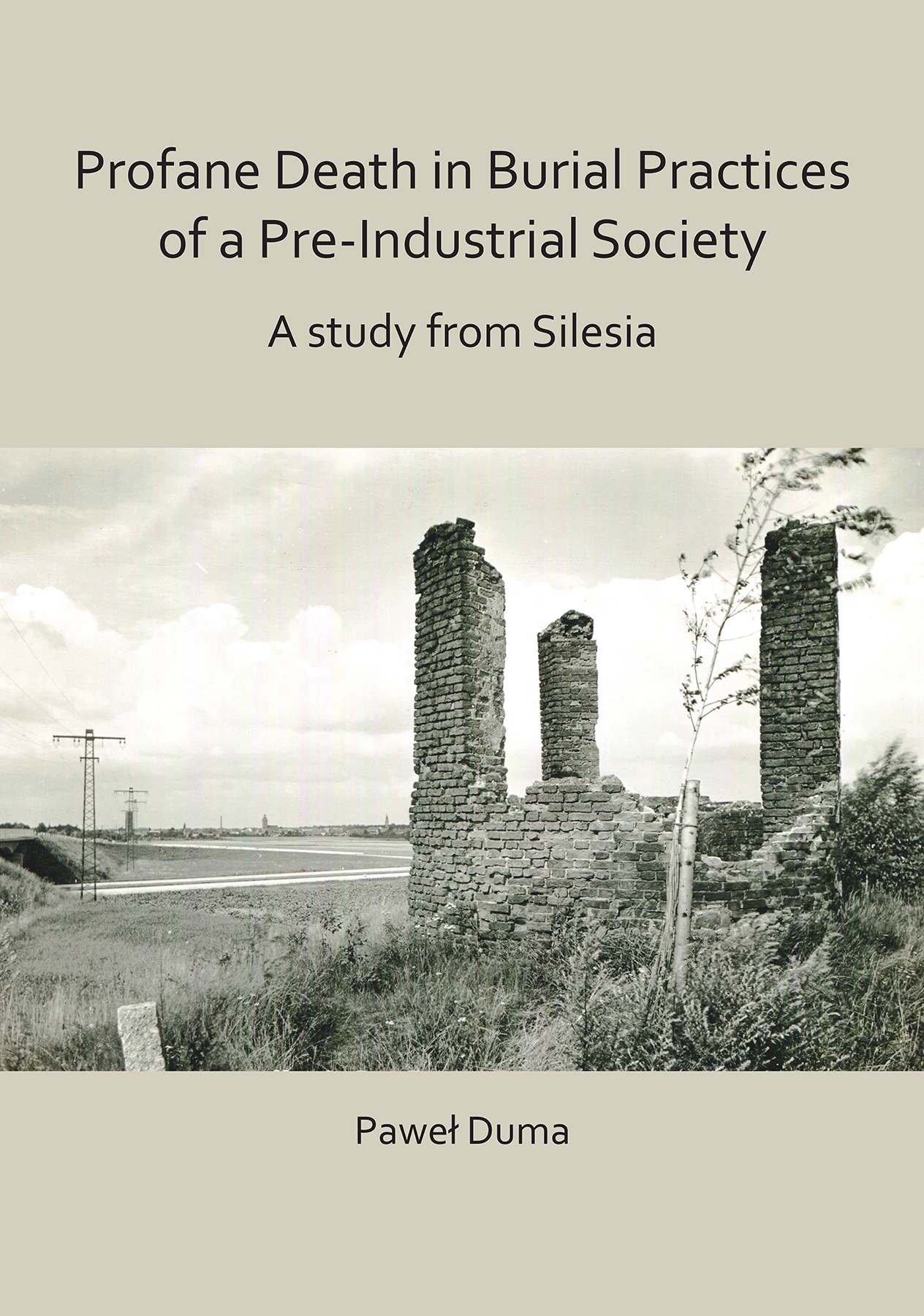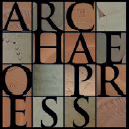
Publishing Scholarly Archaeology since 1997

Download Sample PDF
H 290 x W 205 mm
132 pages
6 tables, 66 figures (31 plates in colour)
Published Jan 2019
ISBN
Paperback: 9781789690897
Digital: 9781789690903
Keywords
deviant burial; gallows; execution sites; Silesia; crossroads burials; suicides burials; false cemeteries; historical archaeology
Profane Death in Burial Practices of a Pre-Industrial Society: A study from Silesia
By Pawel Duma
Paperback
£28.00
Includes PDF
PDF eBook
(personal use)
£16.00
PDF eBook
(institutional use)
£28.00
This book discusses phenomena characteristic of funeral practices of the pre-industrial society of Silesia (Poland). The author explores specific groups of people and the places they were interred, supplementing the study with analysis of the results of archaeological research, which mainly involved fieldwork carried out at former execution sites.
Contents
Introduction; 1. Valorization of cemetery space; 2.1. Cemetery boundaries; 2.2. Functions of cemeteries; 2.3. Hierarchy of cemeteries; 2.4. Hierarchy within cemeteries; 2. Suicide; 2.1. Differences in religious denominations and legal bases for punishment of suicides; 2.2. Place of death - profane space; 2.3. Suicides in cities; 2.4. Significance of crossroads and boundaries for burials; 2.5. Executions of suicides — prevention or punishment?; 2.6. Beliefs and magical practices associated with suicide death; 3. Executed bodies and execution sites; 3.1. Superstitions and magic practices associated with execution sites; 3.1.1. Magical properties of criminal body parts; 3.1.2. Magical properties of the hanging rope and other items from the gallows; 3.1.3. Hanged men’s clothes; 3.1.4. Magical properties of plants growing on the execution site; 3.1.5. The role played by the hangman in perpetuating these superstitions; 3.1.6. Archaeological evidences of the popular beliefs and superstitions; 3.2. The location of execution sites; 3.3. Burials of the executed and false cemeteries’; 3.3.1. Uses of the gallows structure interior; 3.3.2. Different uses of the area outside the gallows; 3.4. Gallows remains variation; 3.5. Analysis of small finds; 4. Women who died in childbirth; 5. Unbaptized children; 5.1 Status of children who died before being baptized; 5.2. Changelings and other superstitious beliefs about new born children; 5.3. Magic properties of body parts of unbaptized infants; 5.3.1. Infant burials in vessels; 5.3.2. The pot burial of an infant from Wrocław; 6. Other groups in breach of the established order; 6.1. Drunkards; 6.2. Non-practicing Christians; 6.3. Other groups denied standard burial; 7. The ‘living dead’ and related apotropaics; 7.1. Categories of the harmful dead; 7.2. Preventive measures; 7.3. Executions of the harmful dead; 7.4. Rationalization and possible natural explanation of deviant burials; 7.5. Grave goods and the belief in ‘living dead’; 7.6. Archaeological finds; 8. Time of the plague — abnormal situation; 8.1. Finding and punishing those ‘guilty of the plague’; 8.2. Plague burial sites and commemoration of plague victims; 8.3. Archaeological record of epidemics; Conclusion; References; Figures; Index

 Add to wishlist
Add to wishlist
